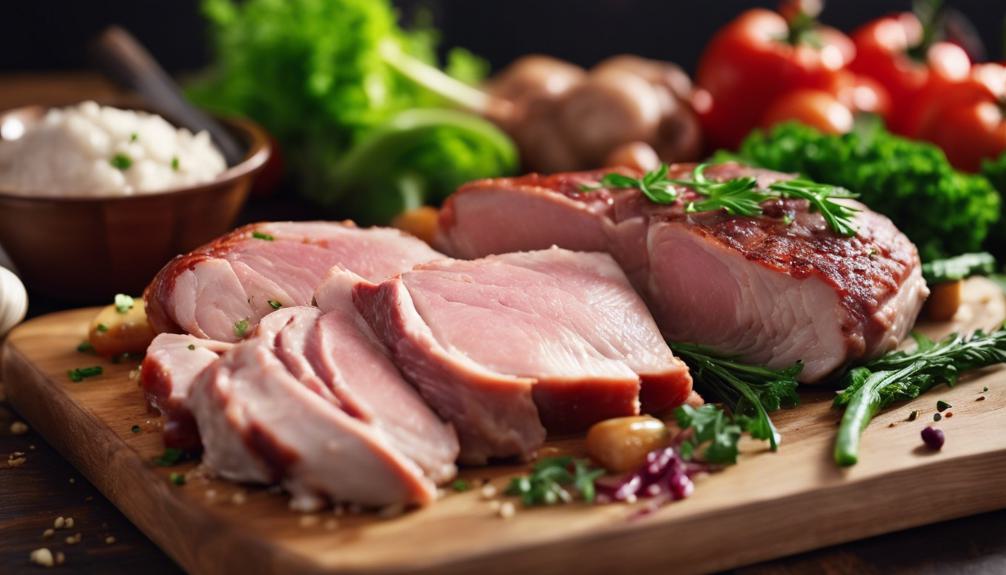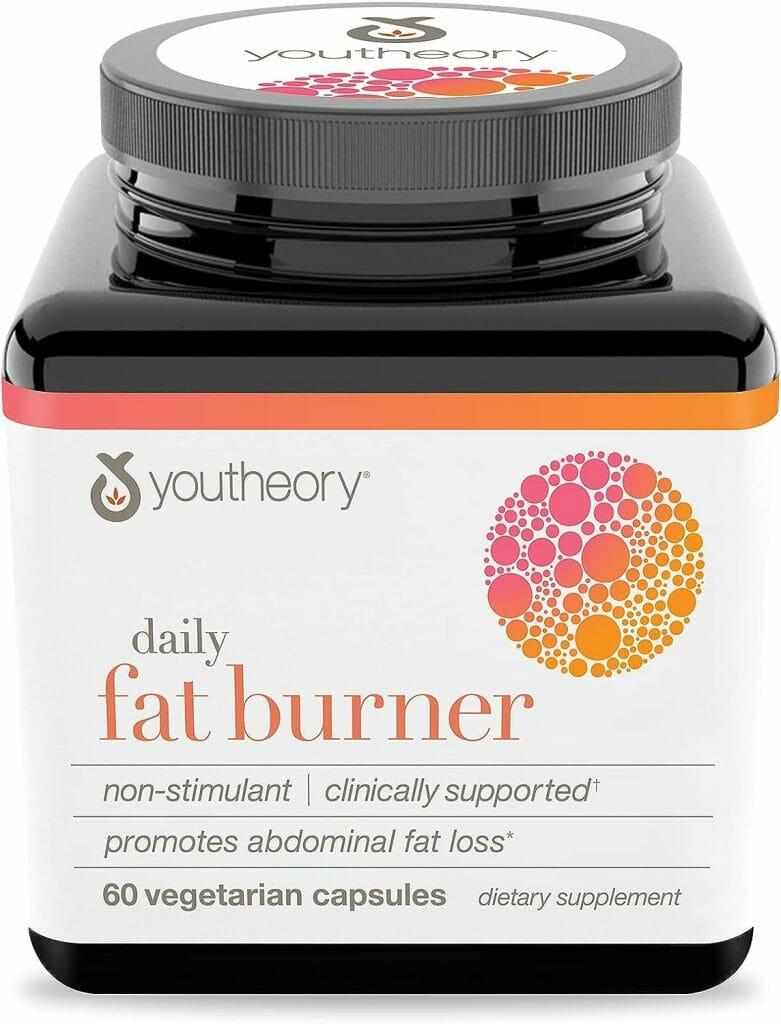When considering your health, selecting between chicken and mutton entails grasping key differences. Chicken breast is lean and low in calories, ideal for weight management. Mutton, conversely, is loaded with nutrients like iron and B vitamins. Chicken generally has lower saturated fat levels, benefiting heart health. Regarding protein, chicken edges out mutton, aiding muscle building. Take into account the environmental impact as well, with mutton being more eco-friendly. While both have health benefits, your choice depends on your nutritional goals and values. More insights await on the journey to better dietary decisions.
Nutritional Comparison: Chicken Vs. Mutton
When comparing the nutritional profiles of chicken breast and mutton chops, you’ll find key differences in calorie content and nutrient composition.
Chicken breast is a lean protein source, lower in calories at 122 per ounce.
On the other hand, mutton chops are rich in iron, potassium, B vitamins for energy, and omega-3 fatty acids for heart health.
Appreciating these nutritional differences can guide your dietary choices effectively.
Saturated Fat Levels: Impact on Health
To make informed dietary choices regarding chicken and mutton, consider the impact of saturated fat levels on your health.
- Chicken meat generally has lower saturated fat levels compared to mutton, especially when choosing lean cuts like chicken breast.
- Mutton chops can contain higher saturated fat levels, potentially impacting heart health if consumed excessively.
- Consuming mutton with visible fat may lead to elevated cholesterol levels.
- Opt for skinless chicken and trim visible fat to reduce saturated fat intake for better heart health outcomes.
Protein Content: Which Is Superior?

Considering protein content, discerning the significance between chicken breast and mutton chops is vital for meeting your daily requirements.
Chicken breast offers about 31 grams of protein per 100 grams, while mutton chops provide around 27 grams.
Opting for chicken can aid in muscle building due to its lean protein status and complete amino acid profile essential for overall health and muscle function.
Environmental Considerations: Chicken Vs. Mutton
With regards to environmental impact, the comparison between chicken and mutton reveals significant differences in sustainability and resource usage.
- Chicken farming contributes to nearly 130 billion pounds of CO2 emissions annually.
- Mutton production generally has a lower environmental footprint.
- Chicken farming leads to water pollution and greenhouse gas emissions.
- Sustainable practices and animal welfare considerations favor mutton over chicken regarding environmental impact.
Health Concerns: Chicken and Mutton Consumption

When comparing the health concerns associated with chicken and mutton consumption, it becomes evident that there are significant differences in their impacts on human well-being. Here’s a comparison to help you make an informed choice:
| Aspect | Chicken |
|---|---|
| LDL Cholesterol | Increases levels |
| Water Pollution | Due to chicken manure |
| Iron & Potassium | Lower content |
| Flavor | Milder taste |
| Nutritional Value | Less rich in nutrients |
Alternative Options: Plant-Based Chicken Products
Plant-based chicken products offer a nutritious and heart-healthy alternative to traditional chicken. Rich in fiber, antioxidants, and essential nutrients, these vegan options don’t contain antibiotics or harmful bacteria, making them a healthier choice.
Choosing plant-based chicken not only supports sustainable practices but also promotes animal welfare, while the expanding market provides diverse choices for those looking to replace chicken in their diets.
Plant-Based Chicken Benefits
Indulge in cholesterol-free, antibiotic-free plant-based chicken options that mirror the taste and texture of traditional poultry, providing a delightful culinary experience packed with essential nutrients and benefits for your well-being.
- Enjoy a guilt-free meal with cholesterol-free and antibiotic-free plant-based chicken.
- Rich in fiber and antioxidants, these alternatives support heart health.
- Opting for plant-based chicken promotes sustainable practices and animal welfare.
- Diverse choices in the market cater to those looking to replace traditional chicken.
Nutritional Comparison With Meat
Considering the nutritional benefits of plant-based chicken compared to traditional meat options reveals a compelling argument for making healthier dietary choices.
Plant-based chicken products offer a cholesterol-free alternative to red and white meat, rich in health benefits.
They serve as a sustainable protein source, providing essential nutrients like iron and omega-3 fatty acids.
Opting for plant-based protein not only benefits your health but also supports animal welfare and environmental sustainability.
Environmental Sustainability Factors
Embracing sustainable dietary choices by incorporating alternative options like plant-based chicken products can greatly reduce environmental impact.
- Plant-based chicken alternatives are free of environmental concerns associated with traditional chicken farming.
- Vegan chicken products contribute to sustainability by reducing the environmental impact of raising poultry for meat consumption.
- Choosing plant-based chicken options helps lower greenhouse gas emissions and minimizes the ecological footprint of meat production.
- Plant-based chicken alternatives offer a cruelty-free option that aligns with ethical and environmental considerations.
Making Informed Choices: Health and Ethics
When deciding between chicken and mutton, it’s important to weigh the health benefits against ethical considerations. Making informed choices means finding a balance that suits your dietary needs and values.
Health Vs Ethics
To make informed decisions between chicken and mutton, prioritize both your health and ethical values by grasping their nutritional profiles and environmental implications.
- Health benefits include protein content, vitamins, and minerals.
- Ethical considerations involve animal welfare and sustainability.
- Balancing health benefits and ethical concerns guides decision-making.
- Comprehending nutritional profiles and environmental impact aids in conscious dietary choices.
Balanced Diet Choices
Considering a balanced diet that aligns with both your health goals and ethical values involves incorporating a variety of protein sources like chicken and mutton while being mindful of nutritional benefits and environmental impacts.
Opt for lean cuts of white meat like chicken or red meat such as mutton to receive essential nutrients like protein, iron, and vitamins, promoting heart health.
Ethical Sourcing Importance
For those seeking to make conscious dietary decisions that align with ethical values and health considerations, grasping the importance of ethical sourcing in meat production is paramount.
- Ethical sourcing of meat involves factors like animal welfare and sustainability.
- Consumers can choose meats from sources prioritizing humane treatment and sustainable practices.
- Transparency in the industry guarantees ethical treatment of animals.
- Support for ethical producers reduces environmental harm and enhances animal welfare.
Frequently Asked Questions
Which Is Healthier Chicken or Mutton?
When choosing between chicken and mutton for health, consider your nutritional needs. Chicken offers lean protein, ideal for weight control and muscle health. Mutton is rich in iron and potassium, essential nutrients for your body.
What Type of Meat Is the Healthiest?
When considering the healthiest meat option, it’s vital to weigh factors like fat content, nutrient profile, and caloric intake. Making informed choices between chicken and mutton can positively impact your overall health and well-being.
Why Do People Prefer Mutton Over Chicken?
When deciding between mutton and chicken, consider mutton’s richer flavor and higher iron and potassium levels. Some prefer mutton for its essential nutrients like B vitamins. Misconceptions about chicken’s fat content also influence choices.
Which Has More Cholesterol Chicken or Mutton?
When comparing cholesterol content, chicken generally has lower levels than mutton. Opting for lean chicken cuts like breast can help manage cholesterol intake. Monitoring cholesterol is important if mutton is part of your diet. Choose wisely for better health.
Conclusion
To sum up, when deciding between chicken and mutton for your health, both options have their pros and cons. Chicken is lower in saturated fat and higher in protein, making it a leaner choice. However, mutton provides essential nutrients and can be a part of a balanced diet.
Ultimately, the key is moderation and variety in your protein sources to guarantee a well-rounded and healthy diet. Make informed choices that align with your health goals and values.








Leave a Reply
You must be logged in to post a comment.